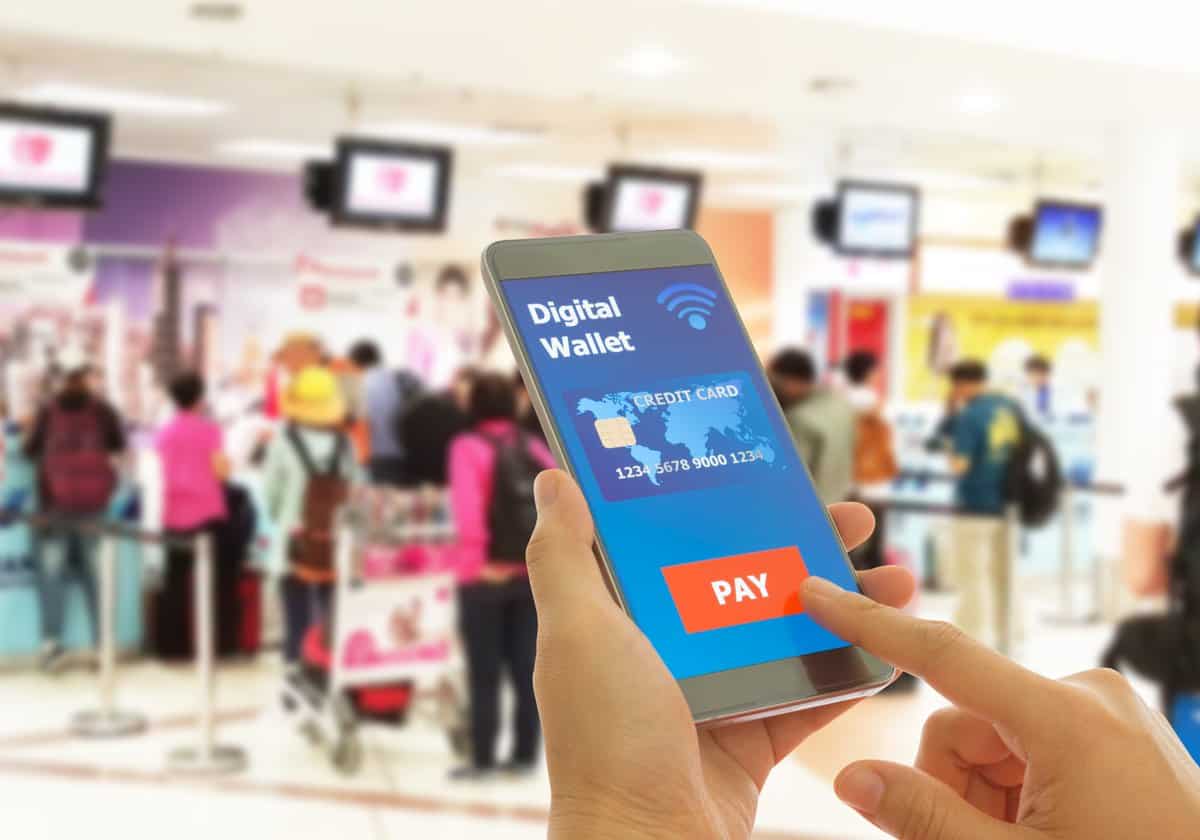The UAE is one of the leading countries in the world for digital payments, thanks to the digitally savvy population of the country as they realized the convenience of making payments through online banking, mobile wallets and payment links a couple of years ago.
After the recent introduction of the Global Data Privacy Laws in the UAE, digital payments found regulatory support to securely make digital payments without tampering with the customers’ data.
As more and more banks and financial services companies adopt financial technology, newer and innovative ways of digital payments are emerging in the UAE, and 2022 will be a year of the ‘Digital Payment Revolution.’
Total transaction value in the Digital Payments segment is projected to reach US$20.15 billion in 2022 in the country, according to a Statista research report.
“Total transaction value is expected to show an annual growth rate (CAGR 2022-2026) of 8.97% resulting in a projected total amount of US$28.41 billion by 2026,” the report says.
Consumer spending through digital wallets is expected to exceed $10 trillion in 2025 globally — up from $5.5tn in 2020, according to a 2021 report by UK-based Juniper Research.
In the UAE, e-commerce spending grew at double the rate of point of sale (POS) transactions in the first quarter of 2022 compared to the same quarter a year earlier, according to Network International, the leading enabler of digital commerce across the Middle East and Africa (MEA).
The rise in online spending – which includes both debit card and credit card transactions – was led by digital payments in the government sector, followed by those in restaurants, supermarkets, and convenience stores, which accounted for more than 45 percent of total spend volumes.

The rise of digital payments also increases the chances of payment fraud. Speaking to TRENDS, Damon Madden, Head of Business Development – Fraud, at ACI Worldwide, said, “Over the past couple of years, we’ve seen a notable increase in most payment fraud types across the region with the exception of card-based counterfeit fraud. Areas of particular concern continue to be ecommerce along with a significant increase in scam-based fraud types.”
Madden explained, “Social engineering of individuals to scam them has become a region-wide concern with attacks across cards, bank transfers and immediate payment schemes.”
Measures to deal with threats
Madden said that there are two key measures individuals and businesses can take to prevent against becoming a victim of a scam:
- Always validate who is contacting you and why. Unsolicited calls from perpetrators impersonating banks and government officials are one of the key attack vectors. If in doubt, terminate the interaction and return the call to the bank or relevant authority via their official communication channels.
- Ensure that any link for payments is from a trusted source. Always check and validate that the payment link information corresponds to the genuine merchant to whom you wish to transfer the funds.
Real-time payments in the region
Real-time payments are here. Countries like Saudi Arabia, Bahrain, and Egypt have gone live with real-time payment schemes that are facilitating person-to-person (P2P) payments. These countries are now working to expand adoption by facilitating person-to-business (P2B/P2M) payments. The UAE too is scheduled to go live with its real-time payment scheme.
Madden said, “Real-time payments are allowing these economies to further drive digital payment experiences and move away from cash. Businesses will have the opportunity to drop costs and improve liquidity for working capital. It is only a matter of time before these in-country schemes will connect to each other to facilitate real-time cross-border payments.”
Talking about the fraud in growing real-time payments, he said, “With the growth in popularity, we do anticipate an increase in fraud. The challenge we have is with an increase in sophistication of controls and learnings from older schemes of payments. Criminals are evolving their tactics to circumvent more sophisticated control frameworks.”
He added, “For example, where previously they would utilise trojans or viruses, they are now utilising social engineering to trick users into sharing sensitive information such as one-time passwords (OTPs), thereby negating the effectiveness of this authentication mechanism. Furthermore, the instant nature of real-time payments is such that without appropriate controls and detection mechanisms, they become an easy target for cybercriminals and organised crime networks.”
Mentioning the best practices with digital payments in the region, he said that risk-based authentication is a must.
He said, “Having an embedded capability designed to drive multi-factor authentication when a transaction is only deemed high risk will ensure that the minimum amount of friction will be present through the payments value chain. Additionally, network intelligence will form a key component of detection strategies in the future.”
“Combining the resources of a community with the ability to personalise the detection capability of a bank will enable any institution to tailor a detection strategy to meet their risk appetite. Lastly, I would say when investing in payments technologies, always consider real-time fraud prevention. Having the ability to seamlessly intervene in the transaction path when a risk or threat eventuates ensures that individuals, businesses, and institutions are protected.”
Cryptocurrency market looks safe
Across all cryptocurrencies tracked by Chainalysis, total transaction volume grew to $15.8 trillion in 2021, up over 550% from 2020’s totals. What’s especially interesting is that illicit activity has become a less prominent part of the overall cryptocurrency ecosystem over the last three years, accounting for just 0.15% of all transaction volumes in 2021, down from 3.37% in 2019, when it was at its highest, largely driven by one massive Ponzi scheme, PlusToken.

Caroline Malcolm, Head – International Public Policy & Research at Chainalysis, said, “Our research has shown that the Middle East is one of the fastest-growing cryptocurrency markets in the world, making up 7% of global trading volumes. The level of market maturity and government sentiment towards cryptocurrencies does vary across the region and some countries such as Bahrain and the UAE are emerging as leaders in the space.”
As it looks to establish itself as a regional crypto hub, Bahrain already has banking regulations for crypto in place, which has been encouraging crypto organisations to establish themselves there. Similarly, the UAE — which transacted approximately US$25 billion worth of cryptocurrency between July 2020 to July 2021 — has seen government regulations effectively attract crypto companies to the country.
In April this year, the cryptocurrency exchange Kraken announced it will be opening a regional headquarters in Abu Dhabi, where it is set to become the first exchange to allow users to directly fund their accounts and trade in UAE Dirhams. In a similar vein, Binance, the world’s largest cryptocurrency exchange by trading volume, announced that it has received provisional approval from Abu Dhabi regulators to operate as a broker-dealer in digital assets. This marks a key step towards the company becoming a “fully-regulated virtual asset service provider” in the city.
Challenges and regulations in crypto space
Malcolm said, “From a policy expert’s perspective, the unique characteristics of crypto assets, including the decentralised and distributed nature of the underlying technology, often make them and their operating environments a difficult match to the existing policies and regulatory toolkits.
But this doesn’t mean they can’t or shouldn’t be regulated, and we are seeing rapid development on this front across four primary areas.”
- Anti-money laundering (AML): The UAE’s introduction of crypto laws was seen as a direct effort to ensure that crypto innovation could occur in a safe environment, in particular to counter criminal activity and specifically money-laundering. The country has already implemented several AML standards recommended by the Financial Action Task Force (FATF).
- DeFi Regulation: Decentralised finance poses specific challenges as it does not necessarily allow the easy identification of an entity on which responsibility for the protocol can be placed. Some initial guidance on this topic has been issued by international bodies such as the FATF and IOSCO. Currently this guidance on DeFi is minimal, though we can expect to see more on this space in 2022.
3. Consumer protection: Already, in the UAE, Article 48 of the Online Security Law warns of prison terms and fines between US$5,000 and more than US$135,000 for unofficial or unlicensed cryptocurrency dealers. Also according to this article, posting misleading ads or inaccurate data online is punishable with jail time, and this applies to individuals who promote cryptocurrencies unrecognised by authorities in the country.







